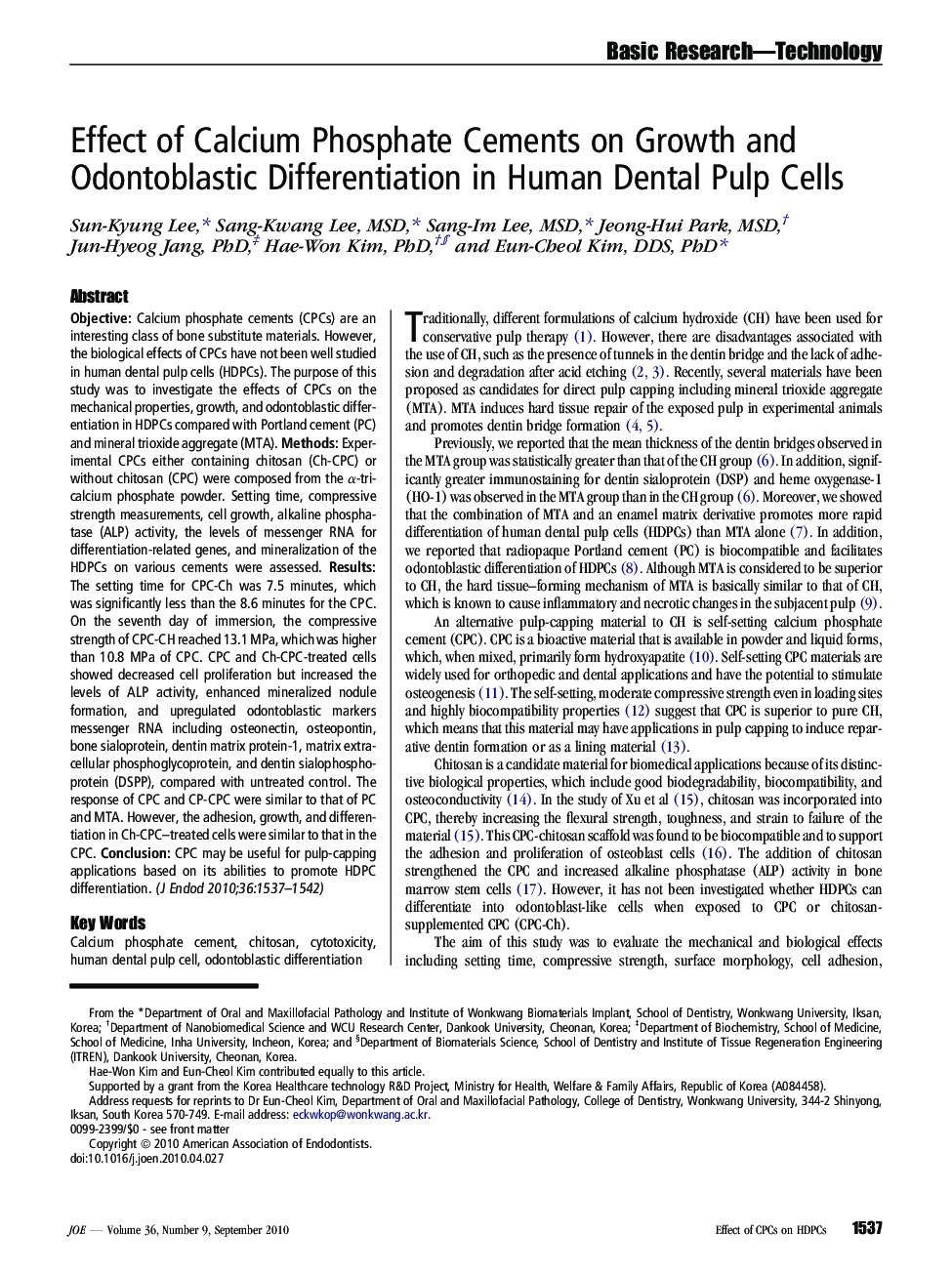| Article ID | Journal | Published Year | Pages | File Type |
|---|---|---|---|---|
| 3149386 | Journal of Endodontics | 2010 | 6 Pages |
ObjectiveCalcium phosphate cements (CPCs) are an interesting class of bone substitute materials. However, the biological effects of CPCs have not been well studied in human dental pulp cells (HDPCs). The purpose of this study was to investigate the effects of CPCs on the mechanical properties, growth, and odontoblastic differentiation in HDPCs compared with Portland cement (PC) and mineral trioxide aggregate (MTA).MethodsExperimental CPCs either containing chitosan (Ch-CPC) or without chitosan (CPC) were composed from the α-tricalcium phosphate powder. Setting time, compressive strength measurements, cell growth, alkaline phosphatase (ALP) activity, the levels of messenger RNA for differentiation-related genes, and mineralization of the HDPCs on various cements were assessed.ResultsThe setting time for CPC-Ch was 7.5 minutes, which was significantly less than the 8.6 minutes for the CPC. On the seventh day of immersion, the compressive strength of CPC-CH reached 13.1 MPa, which was higher than 10.8 MPa of CPC. CPC and Ch-CPC-treated cells showed decreased cell proliferation but increased the levels of ALP activity, enhanced mineralized nodule formation, and upregulated odontoblastic markers messenger RNA including osteonectin, osteopontin, bone sialoprotein, dentin matrix protein-1, matrix extracellular phosphoglycoprotein, and dentin sialophosphoprotein (DSPP), compared with untreated control. The response of CPC and CP-CPC were similar to that of PC and MTA. However, the adhesion, growth, and differentiation in Ch-CPC–treated cells were similar to that in the CPC.ConclusionCPC may be useful for pulp-capping applications based on its abilities to promote HDPC differentiation.
